Here is a series of other receding glaciers in "then and now" views
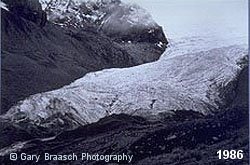
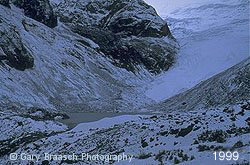
Glacier Ururashraju, at about 15,000 feet in Cordillera Blanca of Peru. Photographed in 1986 by Peruvian glaciologist Alcides Ames, whose studies and direction allowed Gary Braasch to rephotograph it in 1999. Retreat of about 500 M. Ames studies confirms the very rapid deglaciation of the Cordillera Blanca, which is the most ice-covered mountain range in the tropics.
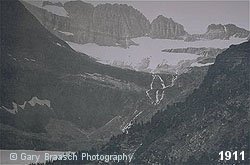
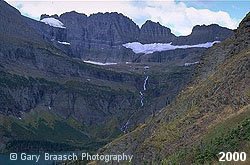
Grinnell glacier, Glacier National Park, USA, which has receded almost out of sight. Photographed by a park photographer in 1911 and by Gary Braasch in 2000. Estimates by US National Park Service scientist Dan Fagre are that all but a few of the 30 glaciers in this Northern Rocky Mountains park will be gone by mid-century.
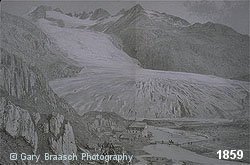
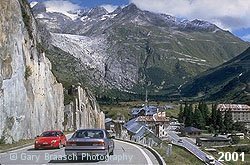
Perhaps the most dramatic glacier withdrawal has been in the Alps, where it has occured in full view of residents, tourists and scientists. This is a 1859 etching of the Rhone glacier in the Kanton of Valais, Switzerland, when the ice filled the valley right to the tiny crossroads of Gletsch. In 2001 the glacier was nearly out of sight, 2.5 km distant and 450 M higher. (Ciceri etching courtesy Stefan Wagner, from Uber die Furka [1999, Limburg a/d/ Lahn, Germany].)
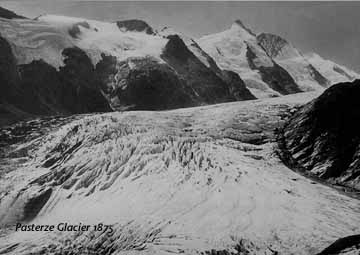
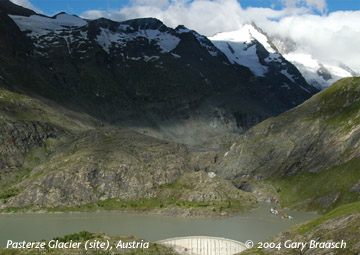
The Pasterze, Austria's longest glacier, was about 2 kilometers longer in the 19th C. but is now completely out of sight from this overlook on the Grossglockner High Road. The Margaritzen-Strausee, a dammed artificial lake, now is in the place where the glacier terminus was in 1875. Measurements of the Pasterze began in 1889 and it has been pulling back the entire time, in approximate step with regional temperatures that have been increasing. The glacier is now about eight Km long and loses about 15 meters per year. However in 2003 the Pasterze decreased 30 meters in length and 6.5 meters in thickness. [1875 image, photographer unknown, is courtesy H. Slupetzky, from the University of Salzburg archives. Gary Braasch photo made Aug 14, 2004]
Alaska's glaciers are receding at twice the rate previously thought, according to a new study published in the July 19, 2002 Science journal. These two images show Portage Glacier, near Anchorage, Alaska, in about 1950 and in July 2001. The ice has pulled back nearly out of sight.
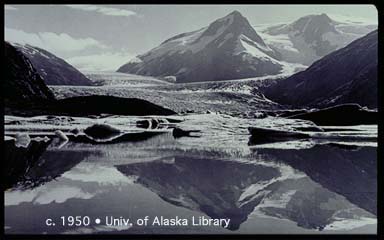
Portage Glacier 1950 (historic photo from the Lulu Fairbanks Collection, University of Alaska Library, used by permission.) |
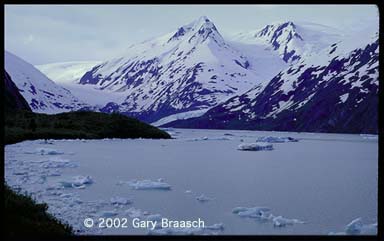
Portage Glacier 2002
Portage Glacier 1914
Portage Glacier 2004
So, now do you see that the world REALLY changed in dramatically?
You can visit this website - http://www.worldviewofglobalwarming.org and u will get more information about the global warming and the way it had affected the world as it were....
Once again i pleased you all to do the right method to save our earth from becoming 1oo% sea or water-cover condition as the sea level continue to rise in a extreme way, but it's your choice on wether u want to save yourself or your generation that followed to suffer from the mistake we make today, it will be not fair for them as the things done is not caused by them.
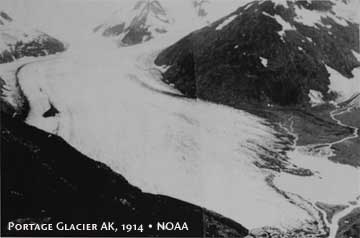





No comments:
Post a Comment